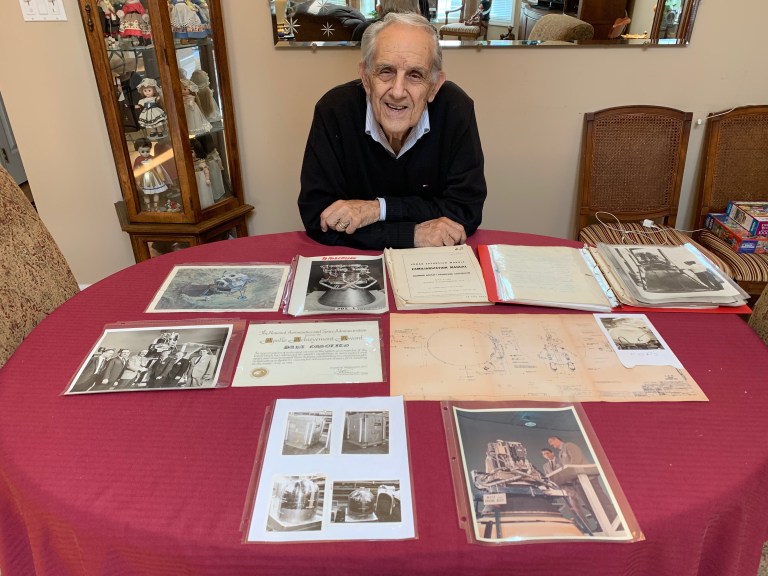
Fifty years ago, Bart Cosolito was one of 500 million people to watch the Apollo 11 land on the moon’s surface.
But, he was one of a much smaller pool of people who could say he helped it get there.
Cosolito of Port Washington was employed as a quality assurance engineer on the lunar module program at Grumman Aerospace Corp. in Bethpage for the better part of his 30s.
He began as an engineer in Grumman’s Manufacturing Research and Development Department until one day his supervisor asked if he would be interested in a new project with NASA.
Once he heard the details of the project – building a lunar module that would fly astronauts to and from the moon – Cosolito said his response was “a resounding yes.”
He said he was then transferred to plant 15, where he worked with about 10,000 engineering, assembly and test personnel at the height of the Apollo program.
They built close to 20 lunar modules over the course of the program, Cosolito said. Grumman built the structure of the module, while subcontractors produced most of its components.
His responsibility was to ensure that the structure and all of its components were built and tested to NASA’s design specifications.
He said the design for the module was agreed upon in 1964 and was conceived by a team led by Thomas Kelly, often known as the “Father of the Lunar Module,” and approved by NASA.
Cosolito said his first reaction to seeing the design of the lunar module was one of disbelief.
“It looked like a bug,” he said. “Nothing like a plane or even a rocket.”
“How could this vehicle deliver men to the moon and get them back safely,” he pondered.
Cosolito specifically worked on the ascent and descent propulsion components of the module, which included the engines used to land the module on the moon’s surface and its departure from it.
The descent engine, after it did its job of landing the module on the moon’s surface, would detach from the module and remain on the moon, Cosolito said.
He said it would detach when the module initiated the ascent engine to depart from the moon. Screws connecting the engines would explode in precise unison, Cosolito said, which was to prevent the module from being sent in another direction besides up.
Once the module returned to the command ship, which remained in the moon’s orbit while the module was dispatched to the moon, the ascent engine would detach and remain in the moon’s orbit, Cosolito said.
He said ensuring the components completed this function required close coordination between Grumman engineers, subcontracted engineers and quality control personnel.
“But teamwork would be the project theme over the next several years as the lunar module was being fabricated and the subcontractors designed, built and tested their respective components,” Cosolito said.
There were many setbacks along the way, he said. “Rocket engines failed, propellant tanks were too heavy and had to be modified, helium tanks were very fragile and had to be handled with care or they would implode,” he said.
But eventually, the machine came to fruition and Cosolito had the unique opportunity of seeing the exact module that would fly and land on the moon as it was being assembled.
Cosolito left Grumman a single year before the Apollo 11 launch after it had became clear there would be no continuation on his contract after the Apollo program ended, he said.
“It was time to move on,” he said. “That was June 1968.”
Cosolito watched the lunar shot on television in July 1969 and was “amazed and elated as the descent engine worked as designed and landed the lunar module on the moon.”
And a couple of days later as he watched the module depart from the moon, he said, he was again delighted to see it safely launch into orbit to “rendezvous with the command vehicle.”
“I sighed with relief and was happy that all components I was associated with worked perfectly,” said Cosolito.
After the completion of the successful space mission, NASA gave participants in the Apollo program the Apollo Achievement Award, of which Cosolito said he is very proud to be a recipient.






